Mildew and oidium on grapes: causes and control measures
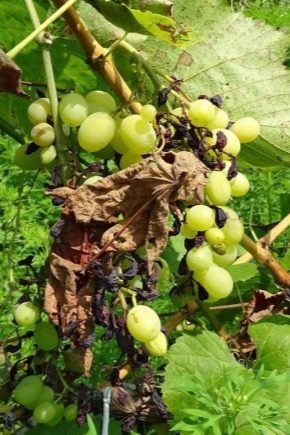
A healthy, beautiful vineyard is the pride of any gardener, which pays for all the costs of effort and money. But the enjoyment of the harvest can be prevented by 2 insidious enemies of grapes, from whose names any knowledgeable person will shudder - mildew and oidium. This couple of fungi can ruin life for more than one season. Adding to the problems is that a beginner can confuse them and, losing precious time, treating grapes for the wrong disease, lose the harvest. Timely detection of the disease is half of the successful fight against it. We will tell you what these "monsters" are, how to distinguish them, what to do to minimize the risk of meeting them.
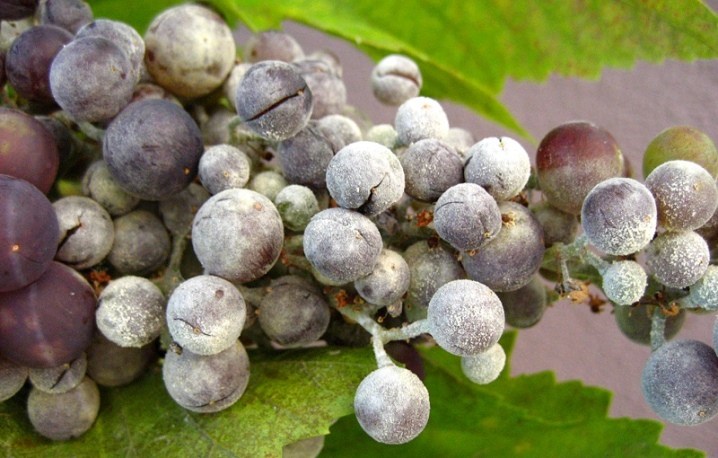
How to distinguish diseases from each other?
To distinguish between these diseases, you need to understand what each of them is and what unique signs it has. Let's start with mildew.
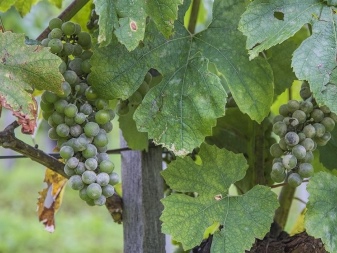
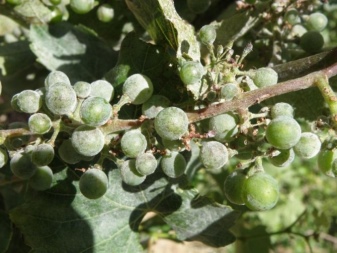
Mildew
She is also downy mildew, or peronospora viticola de Bary. The disease was introduced to Europe (southern France) from America at the end of the 19th century and quickly became a problem for the entire continent. Mildew became one of the key reasons for the crisis and decline of vineyards in the late 19th and early 20th centuries.
This disease is the most common in cultivated grapes. Its causative agent is the mushroom-like organism Plasmopara viticola, which belongs to the class of oomycetes.
Mildew zoospores love a drip-humid environment, which makes the period of heavy rains the most favorable time for the spread of the infection. The most dangerous period is late spring and early summer. The fungus hibernates in the soil and foliage remaining on the ground; it gets on the plants with rain spray. The incubation period of the disease is 12-18 days. After this, asexual sporulation of pathogens begins.
Mildew develops rapidly - a healthy plant the next morning can already be completely affected by the disease. It affects all green parts of the grapes with mildew. Even if the disease does not kill the bush, it will negatively affect the taste of the berries, reducing sugar content and acidity.
In addition, the transferred disease affects the winter hardiness of the plant.

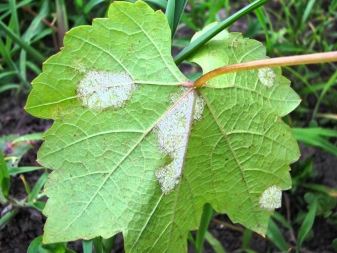
The symptoms are as follows:
- the upper side of the leaves becomes oily, yellow, covered with reddish or brown spots;
- a barely noticeable fluffy whitish bloom forms on the underside of the leaves;
- young leaves dry up and fall off as the disease develops;
- characteristic signs of mildew on grape leaves at the end of the growing season are the rapid death of the leaf and sporulation on its back side;
- a thick white bloom forms on the inflorescences and berries;
- young berries darken and fall off, ripe berries shrivel and turn blue;
- depressed light spots form near the stalks;
- shoots become covered with gray and brown spots, begin to dry out.
All European grape varieties are extremely susceptible to mildew; American varieties have much higher immunity.
Among the resistant varieties are the "Delight" group, the "Aladdin", "Talisman", "Galahad" and "Harold" varieties.
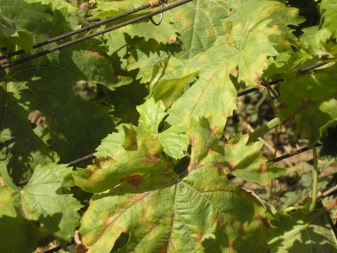
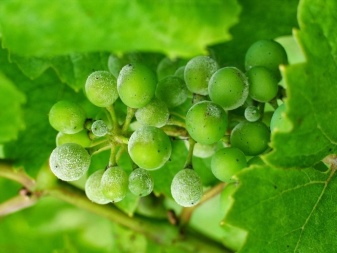
Oidium
Oidium is a disease called powdery mildew in other cultures. Fungal disease caused by Uncinula nector, a marsupial fungus. Like mildew, it came to Europe from North America, but it happened almost half a century earlier - in 1845.
The causative agent of powdery mildew loves heat, the most favorable temperature for the development of the fungus is 25-30 ° C. The incubation period is 7-14 days. The infection lives in the soil, affected buds and shoots. If the planting is dense, and there are already a lot of leaves on the grapes, the oidium can very quickly destroy the entire vineyard.
Diseases can be promoted by tying grapes to old, rotting trellises and a sharp change in the weather.
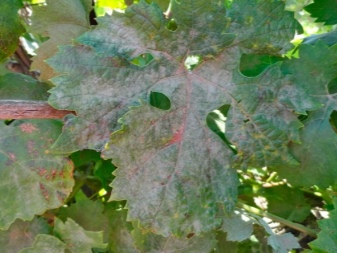

The symptoms are as follows:
- the affected foliage looks curly;
- the leaves are covered with a whitish-gray bloom, spreading over time over the entire surface of the leaf;
- the upper part of the stems, clusters and inflorescences are covered with an ash-like bloom;
- inflorescences and berries affected by the fungus dry out;
- brown spots form on the shoots;
- young berries crack;
- the plant emits an unpleasant odor, similar to that emitted by rotting fish.
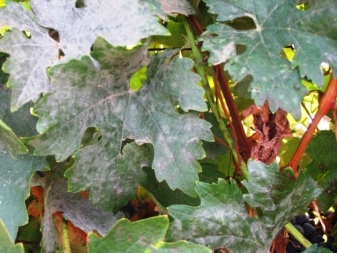
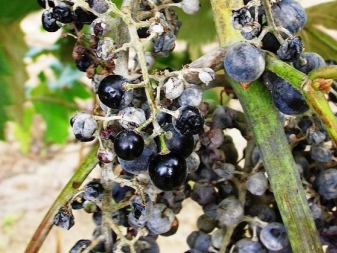
Oidium affects all grape varieties, but European ones are most susceptible to it. The varieties "Delight", "Talisman", "Timur", "Aleksa", "Kishmish Zaporozhsky", "Victoria", "Caucasus", "Zolotoy Don", "New York Muscat", "Mars", " Alden Amethyst "," Lancelot "and others.
The diseases are not as similar as they might seem at first glance. They differ in symptoms, they have different pathogens. But the common thing is that they are capable of completely ruining the crop, if you do not engage in prevention and do not start treatment on time.
Now let's move on to the main question - how to treat plants affected by this scourge.
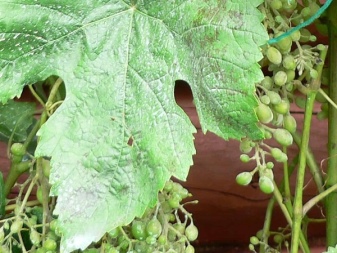
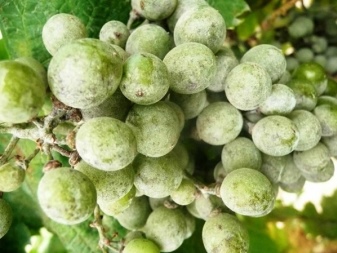
Mildew treatment
It is necessary to fight against mildew in a comprehensive manner, combining proper vineyard care, preventive measures and chemical methods of protection. It is important to remember that it is necessary to process grapes from mildew, alternating means with different active substances, otherwise the fungus will develop resistance.
For a long time, copper was the main active ingredient, but now quite other active ingredients have appeared on the market. Popular mildew treatment regimens are the use of a mixture of Bordeaux and colloidal liquid, a decoction of lime with sulfur, various fungicides, which will be discussed below.

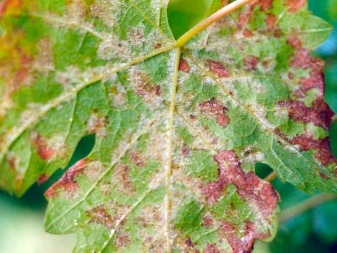
Fight against powdery mildew
The main enemy of oidium became known in the 19th century. It turned out to be sulfur. Accordingly, if the measures for the prevention of mildew and oidium are almost the same, then when choosing a chemistry for treating plants, you will encounter differences. The ideal solution would be to spray the bushes with formulations that include both sulfur and copper or a fungicide.
Spraying bushes with sulfur remains a fairly popular method of treating and preventing powdery mildew. There are a few things to keep in mind when working with sulfur.
- Sulfur treatment is effective only at an air temperature of at least 20 ° C.
- You can not use sulfur in the sun - there is a risk of burning the leaves.
- Damp sulfur cannot be used.
The development of the disease is not affected by the use of growth stimulants, although there is a misconception among gardeners that these substances can contribute to the development of the fungus.
It's not about stimulants, but about their effect - the development of dense foliage, which needs to be thinned out more often than was done before using the drug, which the owners of the vineyard forget about.
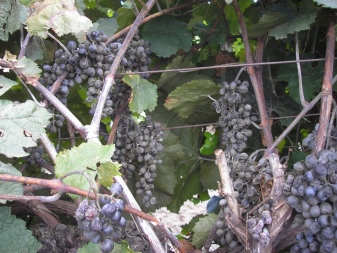

Drugs
Let's go through the main drugs recommended for the prevention and treatment of mildew and powdery mildew.
- Penncoceb - contact fungicide with the addition of trace elements. Suitable for mildew treatment.
- "Topaz 100 EU" - a drug that gives the maximum effect in the treatment of fungal diseases of grapes. The effectiveness of its use in a concentration of 2.5 ml per 10 liters of water is 80%.
- "Ridomil Gold MC, VDG" - systemic contact two-component fungicide. Recommended for preventive mildew treatment of grapes after the flowering period.
- "Consento" - although this fungicide is used to treat phytophthora, it can also help fight mildew.
- "Horus" - a systemic agent of local action, used in the fight against fungi.
- inkstone - a classic broad-spectrum drug. Important! It is not used together with phosphorus-containing products.
- Copper sulfate - another old friend of gardeners. Contains, as expected, copper.
- "Talendo" - but this drug is relatively new and not familiar to everyone. Effective for prevention.
- Ecosil Is a fairly light preparation. It is used to regulate plant growth, but it can also be used to strengthen the defense of grapes, since it has some fungicidal properties.
- "Karatan" - a narrowly targeted contact drug for the treatment and prevention of oidium, inhibits the growth of the pathogen fungus.
- "Switch" - systemic contact antifungal drug.
- "Azofos" - an environmentally friendly antifungal drug of a new generation.
We will talk about the frequency of processing below, but for now, we recall that the last time pesticides can be used in the vineyard a couple of months before harvesting.
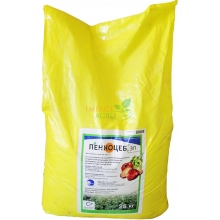
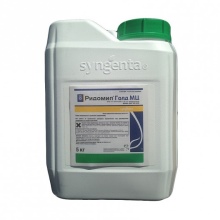
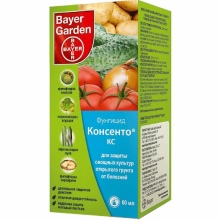
Folk remedies
If you are afraid of using chemicals, you can take a risk and try to cope with diseases using traditional methods. Here are the best ones that have stood the test of time.
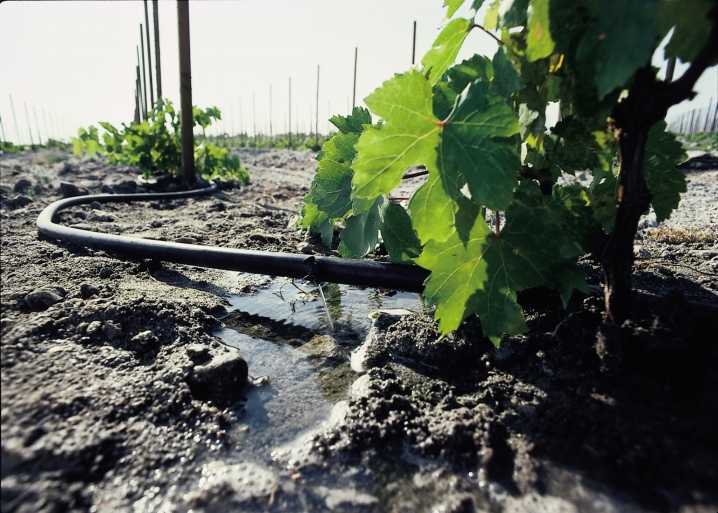
From mildew
Wood ash hood
Composition:
- 1 liter of sifted ash;
- 50 g of laundry soap;
- 10 liters of water.
Dissolve the ash in water and let it brew for 5-7 days. Strain. Add the grated soap.
Process the grapes with the composition every 7 days until the end of autumn.
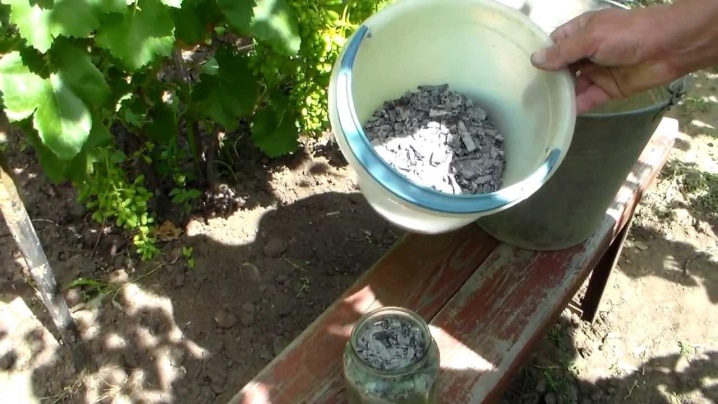
From oidium
Cut grass
Composition:
- grass;
- a bucket of water.
The mowed grass must be scooped up in a heap. When grayish mold appears on it, place it in a bucket and cover with water. Let it sit for a couple of hours. Strain.
The composition must be regularly sprayed with grape bushes until the beginning of autumn.
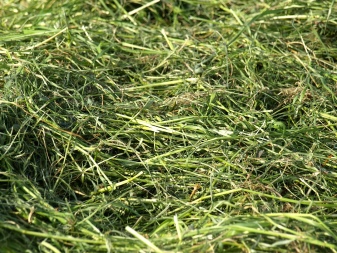

Mullein
Composition:
- 2-3 kg mullein;
- 1 teaspoon of urea
- a bucket of water.
Soak the mullein in water for 2-3 days. Strain the resulting infusion. Add urea.
Treat the grape leaves on 2 sides with the product.
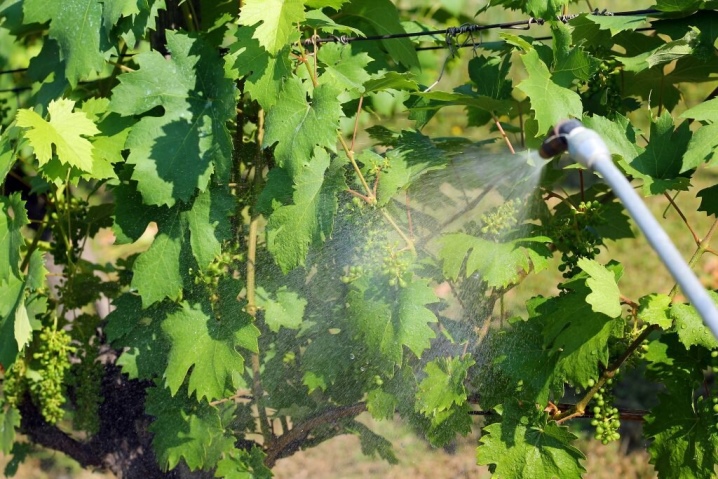
Potassium permanganate
5 g of potassium permanganate must be diluted in a bucket of water, sprayed with the composition of the grape bushes.
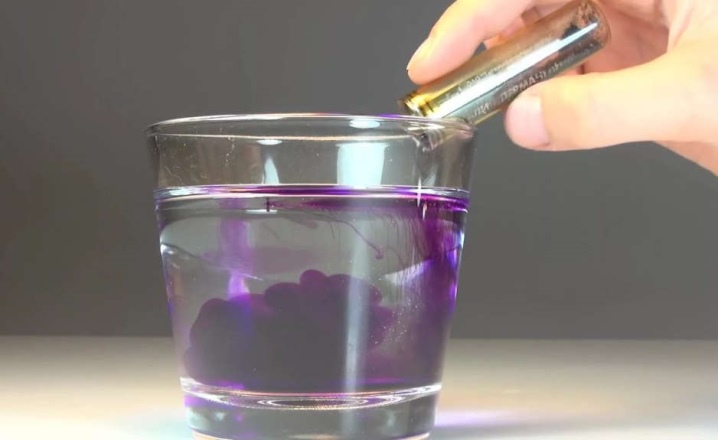
Milk
1 liter of milk or whey is poured into a bucket of water. The mixture is sprayed on the leaves.
In addition to these recipes, for prevention, you can use an infusion of garlic or iodized salt. If the infection is detected at the initial stage, you can try to cope with it with a solution of soda at a concentration of 0.5%.
Baking soda can slow the growth of the fungus.

Prevention measures
Unfortunately, there is very little chance of coping with these sores without using chemistry at all. But it is possible with proper care and timely prevention to enhance plant protection. Disinfection of vines and soil with vitriol at the beginning of spring, contrary to popular belief, is not an effective protective measure - the same oidium develops in the depths of the bud, from where it is very difficult to expel it by washing.
From time to time, you need to pluck a few grape leaves in dry weather, especially if they have suspicious stains. The plucked leaves should be placed with the bottom side on a damp sheet of paper.
If a plaque appears on the back of the spots, the plant is affected by mildew.

The main measures are as follows.
- Do not plant in the immediate vicinity of varieties with varying degrees of protection against mildew and oidium. This will complicate the handling of the plants.
- Give preference to varieties with greater resistance, since there are enough of them.
- The planting should not be too dense.
- Stepsons must be removed on time.
- The soil should not be oversaturated with fertilizers with a high nitrogen content.
- Rotting berries, rotting foliage, and other waste should not be left lying near the bushes.
- The debris must be done in a timely manner so that the crowns are ventilated.

Regarding preventive treatment with contact and systemic fungicides, it should be done 3 times:
- with the length of young shoots 15-20 cm;
- just before flowering;
- when the berries are the size of a pea.
In mid-May, if the temperature reaches 13 ° C, after the first heavy rain, it is imperative to carry out additional processing.If last year the grapes were affected, then another spraying is done when 3-4 leaves appeared on the bushes, regardless of the air temperature. Fixed assets used for preventive spraying: Switch, Karatan and Talendo.
Do not forget about the timely prevention of fungal diseases, competently take care of the plantings. Then the meeting with the "sores" will take place for the vineyard with minimal losses, and the planting will continue to delight with the harvest and a healthy look.














The comment was sent successfully.